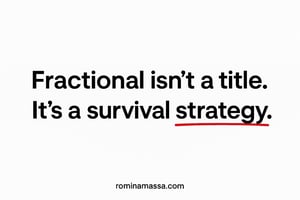Unspoken Rules, Unseen Barriers: How Communication Gaps Push Neurodivergent Talent Out

In today’s workplace, communication is everything. It shapes team dynamics, defines expectations, and determines who thrives and who quietly burns out.
For neurodivergent professionals, though, communication isn’t just a soft skill. It’s a daily battleground.
Roughly 15–20% of the population is neurodivergent, including people with autism, ADHD, dyslexia, and other cognitive differences. Yet despite this significant share of the workforce, most workplace communication norms remain built by and for neurotypical minds, leaving many neurodivergent employees shut out, shut down, or misunderstood.
I know this firsthand.
I once got laid off because I needed written instructions.
Not because I wasn’t capable. But because I was in a workplace that only rewarded intuition, speed, and silence.
The Myth of “Good Communication”
Let’s talk about the workplace holy grail: communication.
It’s always top of the list in performance reviews, hiring wishlists, and leadership webinars.
But what we call "good communication" is often just "comfortable for neurotypical people." Unspoken rules. Vague expectations. Side-eye feedback. Slack messages with zero context. This isn’t communication. It’s gatekeeping.
In a Deloitte report on neurodiversity in the workplace, 80% of neurodivergent individuals said they mask or camouflage their differences at work to fit in. Why? Because workplace culture too often penalizes directness, slow processing, or the need for clarity—traits that aren’t deficiencies, but differences. And if you’re autistic, ADHD, or otherwise neurodivergent, those gaps can cost you your job, your confidence, and your career path.
What Neurodivergent Professionals Actually Need
We’re not asking for special treatment. We’re asking for clarity. Clear expectations. Written instructions. Feedback that is direct and respectful. Defined success metrics. Psychological safety to ask questions. These aren’t “accommodations”. They’re foundations for high-performing teams.
The time I thrived most? I was working on a federal campaign where everything was documented to the letter. I didn’t have to guess. I could focus. And I delivered some of the best results of my career. It wasn’t a fluke. It was a well-designed system. I know because I designed it. Compare that to a past workplace where I was expected to "just know" the rules of engagement. I asked for clarification and was labeled as difficult. I missed signals I wasn’t told to look for. And eventually, I was let go.
I wasn’t the problem. The communication culture was.
Here are just a few practices that support neurodivergent success:
- Documented processes, checklists, and onboarding guides
- Asynchronous updates instead of always-on meetings
- Written follow-ups to verbal feedback
- Transparency around priorities and changes
- A culture where questions are encouraged—not penalized
Who Benefits from Clarity? Everyone.
The truth is: systems that support neurodivergent folks make things better for everyone.
According to Harvard Business Review, teams that include neurodivergent professionals are often more productive and innovative, but only when the environment is built to support diverse communication needs.
This isn’t just about inclusion. It’s about performance. When we design for the margins, we lift the center. A clear onboarding process doesn’t just help an autistic new hire. It helps the whole team ramp up faster. Direct, written feedback doesn’t just reduce anxiety for ADHD employees. It reduces misalignment for everyone. And normalizing documentation? It reduces rework, turnover, and burnout across the board.
Communication is a skill. Not an assumption. And clarity isn’t an accommodation. It’s respect.
Final Thoughts: It’s Time to Rethink the Standard
If your workplace culture only rewards speed, intuition, or unwritten norms, ask yourself: Who are you leaving out?
Brilliance doesn’t always look like quick replies or confident chatter. Sometimes, it looks like someone quietly building a brilliant system—once you give them the blueprint.
Want to build a workplace that actually works for every brain in the room? Start with clarity. Start with care.




